Don't wanna be here? Send us removal request.
Text
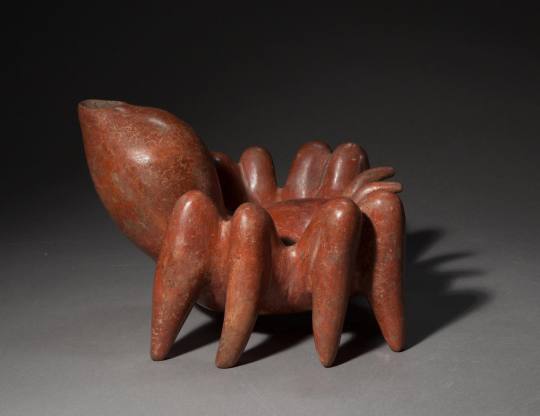
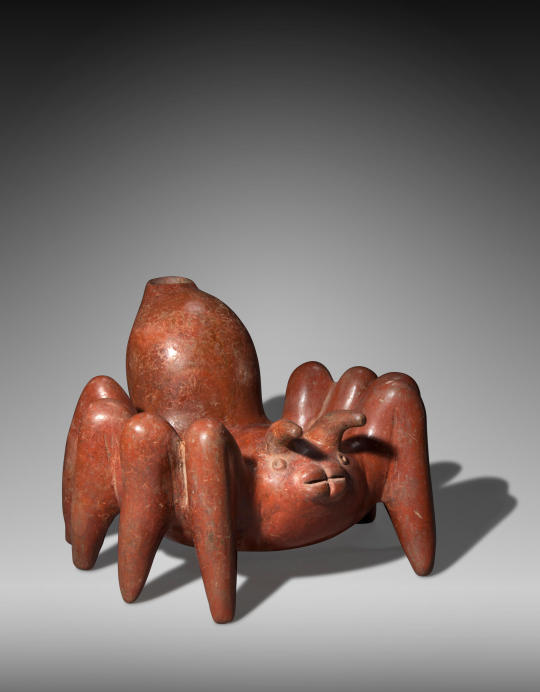
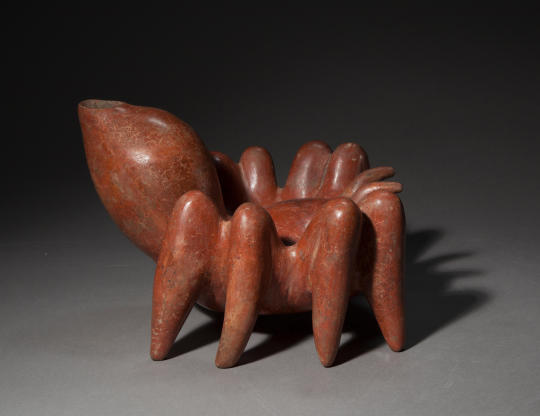
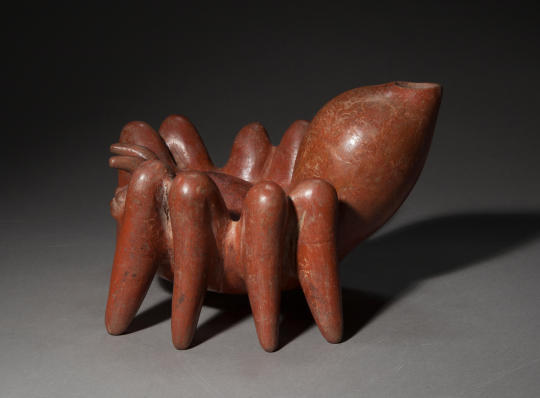
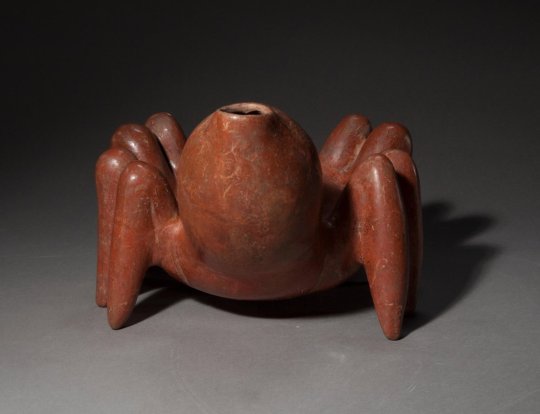
Colima spider-shaped vessel, Late Pre-Classic period, ca. 300 BC–300 AD,
Crafted from terracotta with a reddish-brown slip.
Length 9 1/4in (24cm)
Photo Credit: Bonhams.
#art#history#design#style#archeology#sculpture#antiquity#collectors#figure#spider#colima#terracotta#vessel#pre-classic period#mexico#south america#animal
60 notes
·
View notes
Text
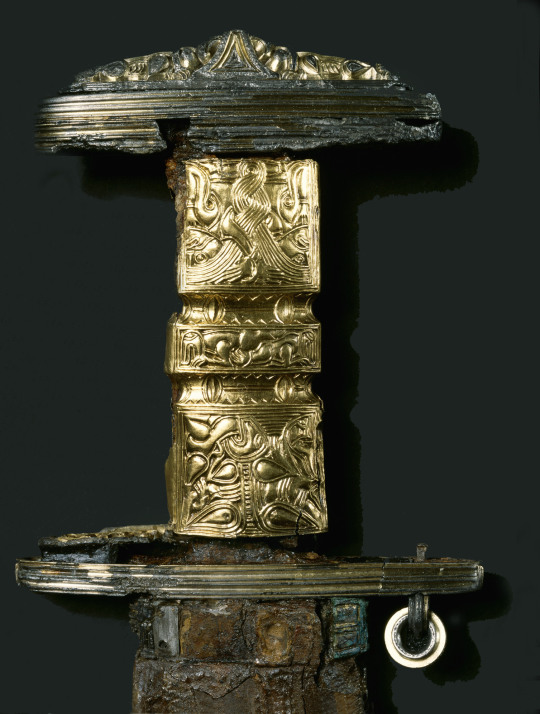
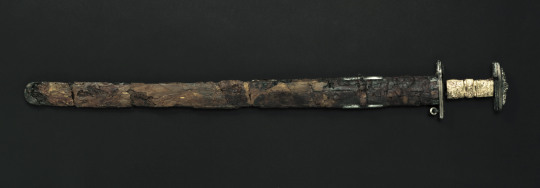
Ancient "Snartemo" Sword, Early 6th Century AD,
Magnificent iron sword with gold and silver plated hilt and wooden scabbard with silver doping shoe. Broken in several pieces, but complete.
It was discovered in the autumn of 1933 by Richard and Olav Kjellingland on the farm Snartemo in Southern Norway.
They found a large stone slab with a cavity underneath, which contained a stately tomb. Inside the tomb, they found the sword, which later became known as the Ancient Snartemo Sword.
Total length 92 cm, of which the scabbard with doping shoe 79 cm. Upper and lower hilt length 9.6 and 11.1 cm respectively.
#art#history#design#style#archeology#sculpture#antiquity#collectors#sword#norway#snartemo#6th century AD#grave#artifact#gold#silver#iron
87 notes
·
View notes
Text
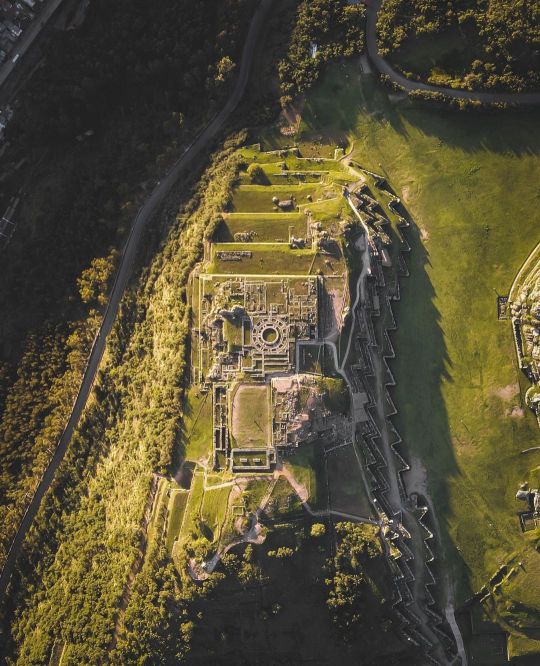
Muyuqmarka, Cusco, Peru,
Daiji Umemoto Photography
#art#history#design#style#archeology#antiquity#architecture#peru#cusco#temple#muyuqmarka#inca#tower#inti#building#muyuq marka#site#daiji umemoto
23 notes
·
View notes
Text

Stela of the Lady of the House, Tabiemmut,
Kushite Period–Saite Period, (Dynasty 25–26), ca. 750–525 B.C.
Wood, paint, gesso,
H: 43 cm ; W: 29 cm
As part of the burial equipment, funerary stela made a prayer for offerings for the maintenance of the deceased. In addition to forms of Osiris, Re-Harakhty and Atum—as the rising and setting sun and thus connected with continued life—are particularly favored focal gods. In contrast to stela of the Third Intermediate Period, subdued coloring and a more standardized style are adopted in this period.
Here the lady of the house Tabimut, daughter of the doorkeeper of the house of Amun and the lady of the house Harhabhes, adores Re-Harakhty followed by Isis and the Four Sons of Horus. The text mentions Re-Harakhty and Atum.
#art#history#design#style#archeology#antiquity#figure#stela#paint#wood#gesso#egypt#osiris#atum#tabimut#doorkeeper#amun#horus#kushite period#saite period#tabiemmut
16 notes
·
View notes
Text
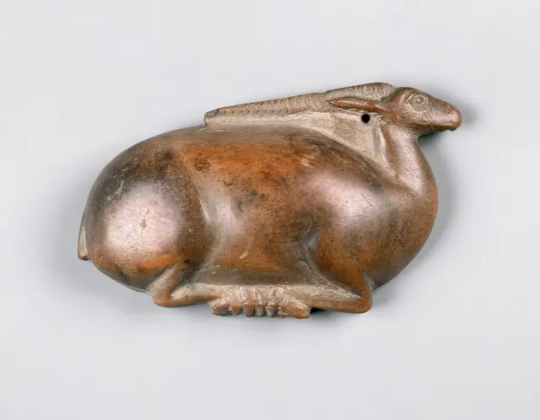
Cosmetic Dish in the Form of an Oryx, Egyptian (c. 1550–1069 BCE),
Steatite, 3 inches x 5 1/4 inches x 1 1/4 inches,
Image courtesy the San Antonio Museum of Art archives
#art#history#design#style#archeology#sculpture#antiquity#figure#oryx#animal#egypt#cosmetic#dish#steatite#san antonio museum of art
59 notes
·
View notes
Text
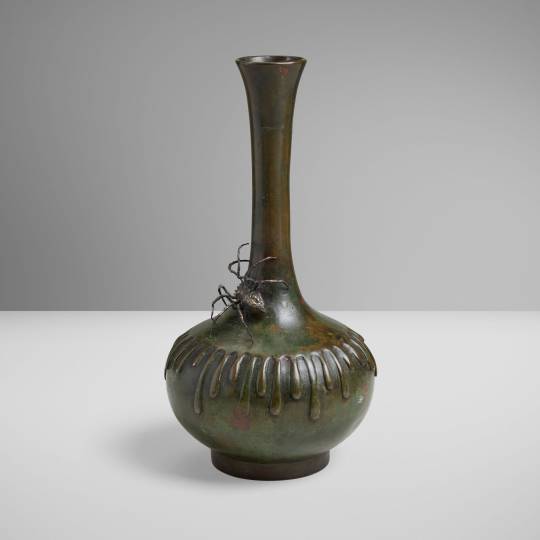
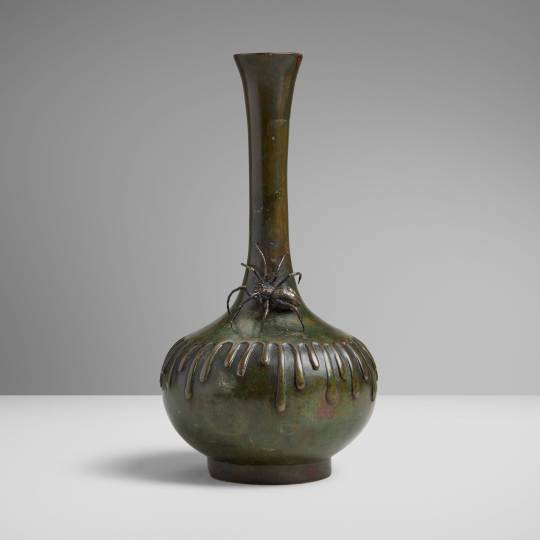
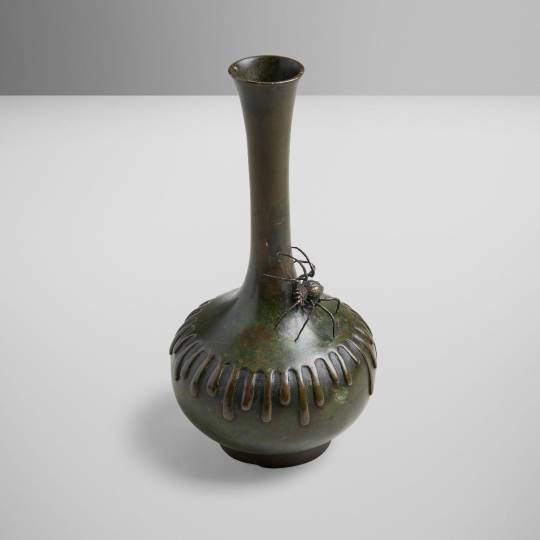
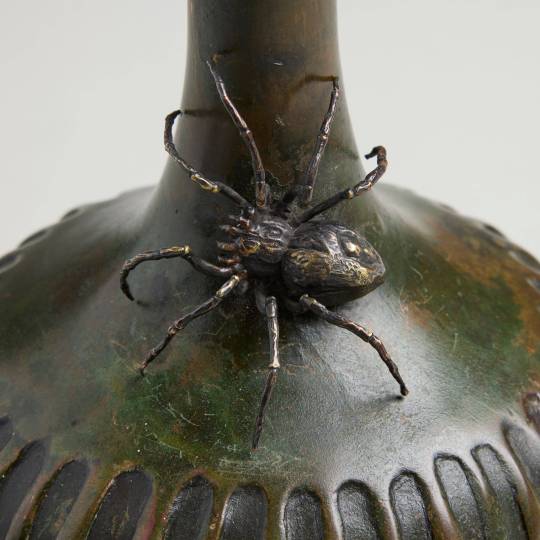
Vase with spider, Japan,
Meiji period (late 19th-early 20th century),
Patinated bronze,
11 h × 5½ dia in (28 × 14 cm)
Courtesy: Wright20
#art#creepy#minimal#vase#spider#japan#meiji period#19th century#bronze#Patina#surreal#sculpture#wright20#meiji#antiquities#style
52 notes
·
View notes
Text




Ceratosaurus Nasicornis
A Mounted Juvenile Ceratosaurus Skeleton, Late Jurassic, Kimmeridgian Stage (approx. 154-149 million years ago),
Morrison Formation, Bone Cabin Quarry (West), Albany County, Wyoming, USA,
An exceptional, exhibition-ready mounted skeleton, measuring approximately 6 feet 3 inches in height, and approximately 10 feet 8 inches in length.
Consisting of 139 original fossil bone elements with additional sculpted materials, the skeleton boasts a superb virtually complete skull (57 fossil bone elements).
Judging from the delicate, fine nature of the bone structure, and the overall size and degree of bone development, it can be determined that the skeleton belonged to a juvenile individual.
The bones are fully mineralized with a dark grey to black coloration, and the fossilization is superb with even small, delicate bones being preserved in fine detail.
Each skull bone is extraordinarily complete, including the lower jaws with both upper and lower dentition. In addition to the incredible 43 teeth present in the dentaries, there are 5 loose rooted teeth.
The diagnostic horned nasals are distinct and well preserved, and the orbital ridge-shaped horns are also intact and discernible.
Photography: Matthew Sherman
Courtesy: Sotheby's
#art#history#archeology#collectors#skeleton#fossil#ceratosaurus#late jurassic#albany county#wyoming#usa#matthew sherman#bones#skull#sotheby's
22 notes
·
View notes
Text

Frozen in Time: A 30-Million-Year-Old Marvel!
This 'praying' mantis is perfectly preserved within a flawless piece of Dominican amber from the Oligocene period—dating back an astonishing 23 to 33.9 million years.
The amber itself derives from the extinct Hymenaea protera, a prehistoric leguminous tree. Most amber found in Central and South America comes from its resin.
Amber from the Dominican Republic is known as Dominican resin, which is noted for its clarity.
Locked in nature's time capsule, every delicate detail from its slender legs to its fragile antennae remains intact, as if it were paused mid-movement all those millions of years ago.
Discovered in the Dominican Republic and auctioned by Heritage Auctions.
#art#history#style#archeology#sculpture#figure#nature#mantis#dominican republic#amber#frosted#frozen#time#resin#oligocene period#locked#time capsule#heritage auction
472 notes
·
View notes
Text

A Pair of Greek Gold, Hardstone & Enamel Earrings,
The enameled swans hang from a granulated disc, which is reminiscent of the decoration of Macedonian shields due to the semicircles extending from the edge.
Chains decorated with emerald beads hang down from the sides.
Hellenistic Period, Circa 3rd - 1st Century B.C.
1 7⁄16 in. (3.6 cm.) long.
Courtesy: Christie's
#art#history#design#style#archeology#sculpture#antiquity#collectors#christie's#jewellery#jewelry#jewel#greek#gold#hardstone#earrings#swan#bird#macedonia#emerald
2K notes
·
View notes
Text
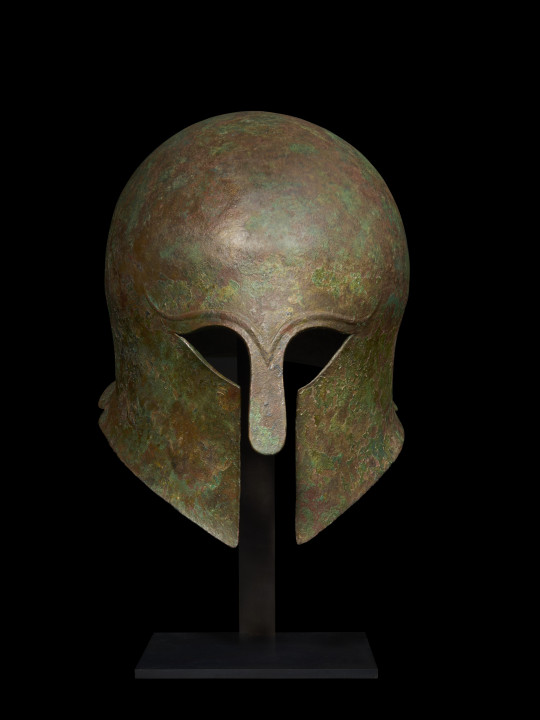
A Greek Bronze Corinthian Helmet,
Archaic Period, Circa Late 6th - Early 5th Century B.C.
10 5⁄16 in. (26.2 cm.) high
Courtesy: Christie's
#art#history#design#style#archeology#antiquity#collectors#christie's#helmet#greek#bronze#corinthian#archaic period#6th century B.C.#5th century B.C.#military#soldiers
119 notes
·
View notes
Text
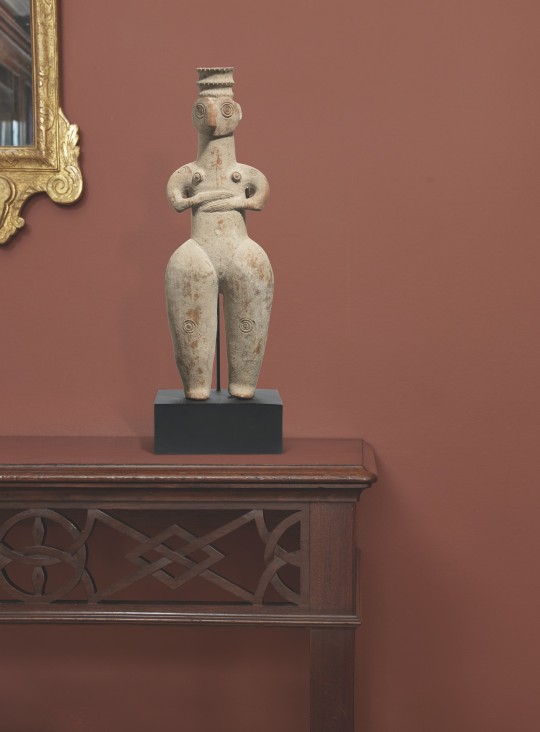
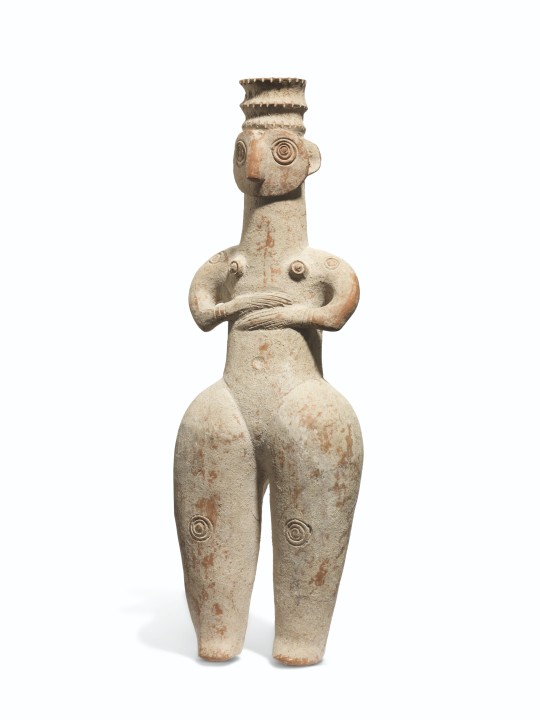
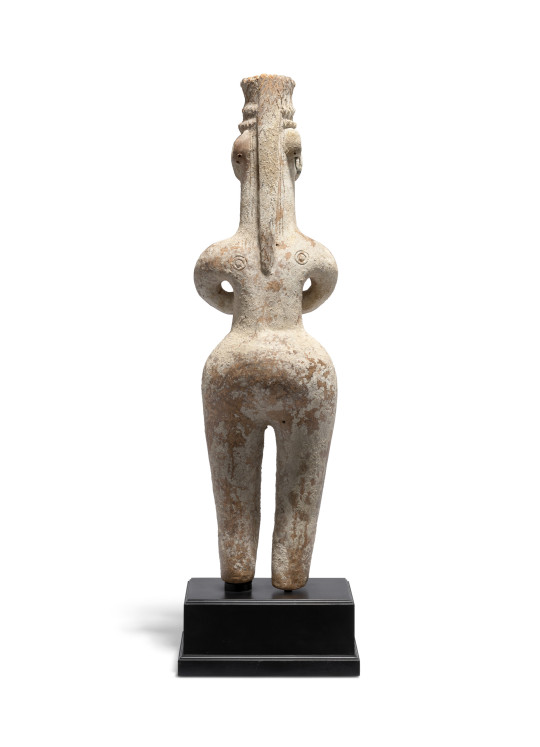
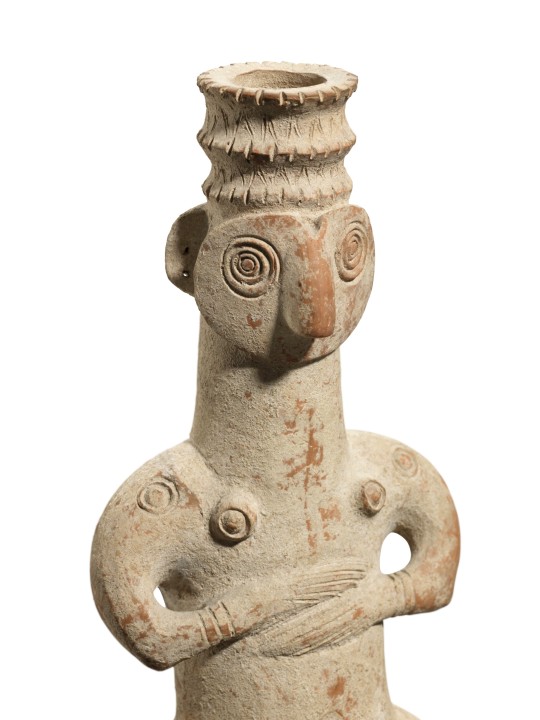
AN AMLASH POTTERY FEMALE FIGURE,
Iran, Circa Early 1ST Milenium B.C.
18 ¼ in. (46.5 cm.) high
Courtesy: Christie's
#art#history#design#style#archeology#sculpture#antiquity#collectors#christie's#figure#amlash#pottery#female#iran#1st millenium B.C.
55 notes
·
View notes
Text
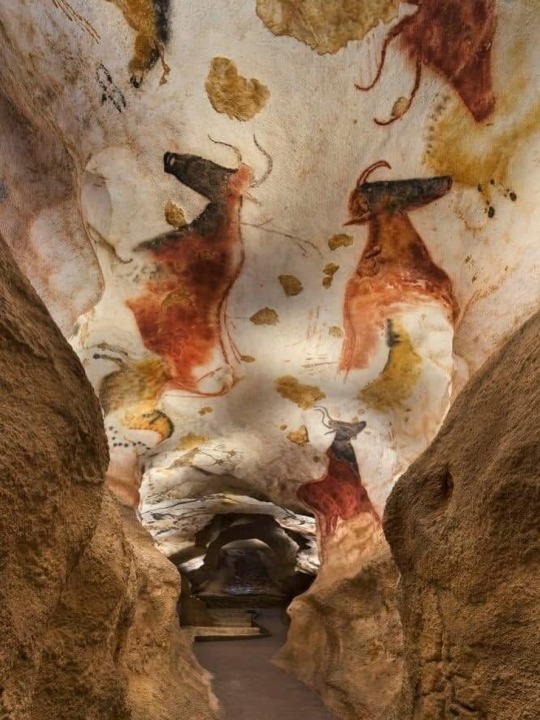
Lascaux Cave, Montignac, Dordogne region, France,
Lascaux Cave is famous for its exceptionally well-preserved Palaeolithic paintings.
The cave, discovered in 1940, features over 600 painted and drawn figures, primarily animals like horses, deer, and bison, as well as nearly 1,500 engravings.
The paintings, dating back to around 17,000 to 15,000 BCE, are considered some of the finest examples of prehistoric art.
#art#history#design#style#archeology#cave#fresco#lascaux#montignac#dordogne#france#painting#palaeontology#palaeoart#animals#horse#deer#bison#engraving
1K notes
·
View notes
Text

Sarmatian Diadem, 1st century AD, Scythian Culture,
Found at the Khokhlach kurgan burial mount, Novocherkassk, Russia,
The diadem consists of three hinged parts, the whole surface inlaid with garnet and glass. In the center is an amethyst bust of a woman wearing a tunic and crowned with a gold wreath inlaid with almandine.
The upper edge of the diadem is decorated with a figurative frieze representing a ritual scene of sacred animals processing towards the Tree of Life. The lower edge is decorated with pendants bearing rosettes rimmed with gold beads, pearls and small plaques.
This diadem is a typical example of the eclectic art which combed both Classical features and elements of Sarmatian art. It was intended for ritual use and was associated with the cult of fertility.
Gold, amethyst quartz, almandines, garnets, turquoise, coral, glass, pearls, resinous mass.
H. 15 cm.; L. 61 cm.
State Hermitage Museum, St. Petersburg, Russia
#art#history#design#style#archeology#sculpture#antiquity#diadem#crown#russia#1st century AD#hermitage#gold#jewellery#jewelry#collectors#amethyst#turquoise#coral#glass#pearl
1K notes
·
View notes
Text
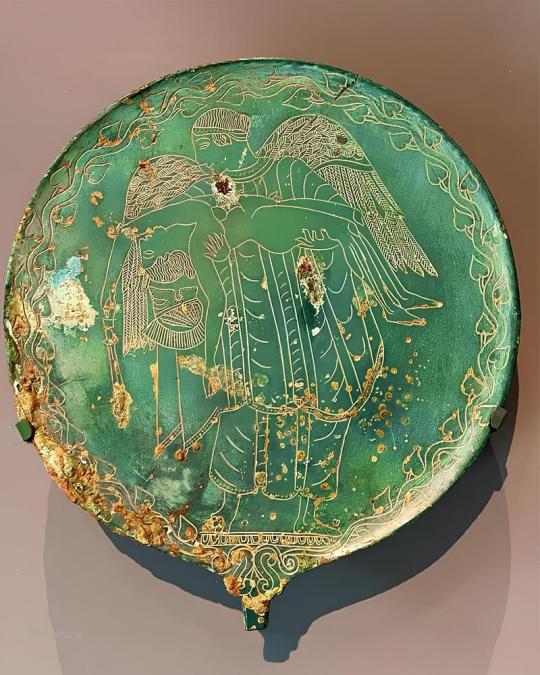
Hand Mirror, 470/450 BC, Etruscan,
The Etruscans dominated much of Italy until the Romans conquered them. This bronze hand mirror was probably buried with an Etruscan woman. The back, seen here, is engraved with a tragic episode from Greek mythology.
Probably from Vulci, Italy,
Bronze,
16.8 × 15.1 × 0.7 cm (6 5/8 × 6 × 5/16 in.)
Art Institute of Chicago
#art#history#design#style#archeology#sculpture#antiquity#collectors#mirror#hand mirror#etruscan#italy#vulci#bronze#warrior#greek mythology
1K notes
·
View notes
Text




Scarab Bracelet of Tutankhamun,
New Kingdom, late 18th Dynasty, reign of Tutankhamun, ca. 1332-1323 BC.
The scarab bracelet of Tutankhamun is considered a masterpiece of ancient Egyptian jewelry. The rigid gold bracelet is composed of two semicircles joined together by a hinge on one side and a clasp on the other. The central plaque bears a cloisonné scarab inlaid with lapis lazuli.
The scarab, symbol of the morning sun, rebirth and protection in ancient Egyptian culture, was the most popular motif used in jewelry. The small circumference of this bracelet suggests that it was made for King Tutankhamun when he was a child.
The bracelet itself is also inlaid with carnelian, lapis lazuli, and colored glass. It was found in the cartouche shaped box that contained several other objects, including the fine pair of earrings which also seem to have been personal possessions.
In ancient Egypt, scarab bracelets were a popular form of jewelry. The scarab beetle held great significance in Egyptian culture, symbolizing rebirth and protection.
These bracelets were often made of precious materials such as gold or semi-precious stones, and they featured a scarab beetle motif. The scarab beetle was believed to bring good luck and ward off evil spirits.
Scarab bracelets were worn by both men and women and were considered a fashionable accessory as well as a symbol of religious and spiritual beliefs.
The Egyptians adopted the scarab (Ateuchus sacer) as a symbol of the sun god, because they were familiar with the sight of the beetle rolling a ball of dung on the ground and this action suggested to them that the invisible power that rolled the sun daily across the sky could be represented pictorially as a scarab.
From the Tomb of Tutankhamun (KV62), Valley of the Kings, West Thebes. Now in the Egyptian Museum, Cairo. JE 62360
#art#history#design#style#archeology#antiquity#jewellery#jewelry#bracelet#gold#scarab#sun#spiritual#god#tutankhamun#cairo#egypt#pharaon#lapis lazuli#carnelian#glass
596 notes
·
View notes
Text
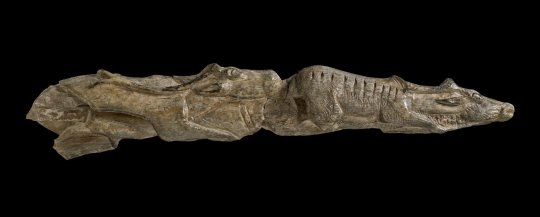
Swimming Reindeer,
It's a 13,000-year-old Magdalenian sculpture of two swimming reindeer conserved in the British Museum. It was made in what is now modern-day France by an unknown sculptor who carved the artwork from the tip of a mammoth tusk.
The sculpture was found in two pieces in 1866, but it was not until 1904 that Abbé Henri Breuil realised that the two pieces fit together to form a single artwork of two reindeer swimming nose-to-tail.
The pieces of the sculpture were discovered by a French engineer, Peccadeau de l’Isle, in 1866 while he was trying to find evidence of early man on the banks of the River Aveyron.
Size: 207 mm long
#art#history#design#style#archeology#sculpture#antiquity#collectors#figure#swimming#reindeer#magdalenian#british museum#mammoth#tusk#france
204 notes
·
View notes
Text
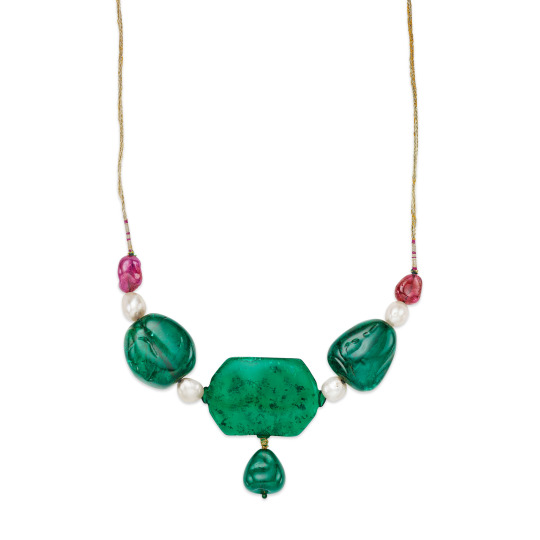
A Mughal multi-gem and emerald necklace, c. 1750,
Centring upon a hexagonal and drop-shaped emerald of approximately 297.00 carats total, two baroque-shaped emeralds, baroque drop-shaped spinel bead, baroque ruby bead, baroque natural pearls of 14.20 to 11.60 mm,
From Magnificent Mughal Jewels: Property from a Royal Collection,
Courtesy: Christie's
#art#history#design#style#archeology#antiquity#christie's#jewellery#jewelry#mughal#emerald#necklace#1750#baroque#ruby#pearl#royal
40 notes
·
View notes